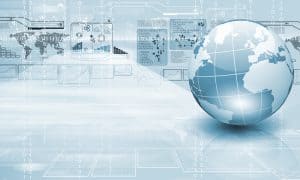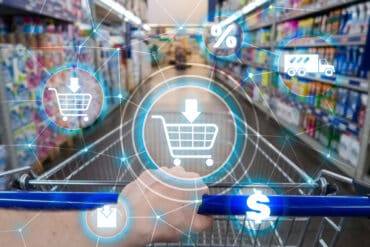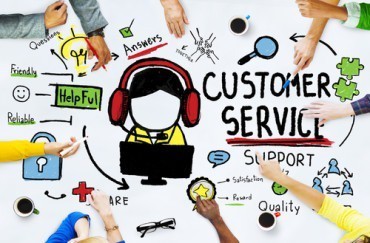
The pandemic has served as a catalyst for the technological innovation that will help business leaders triumph over future disruptions.
After being batted around by the whirlwinds of the pandemic, every company in the world is facing the same question: When will life and business be normal again?
The truth is, we may never return to life as we once knew it. For the past two years, the pandemic has introduced unprecedented levels of disruption, throwing a wrench into any short- and long-term plans. What started as two weeks of work from home has turned into ongoing supply chain bottlenecks, rapidly changing consumer behavior, and employment issues that plague businesses across all industries. Business leaders are still struggling to break through today’s disruption while also trying to stay ahead of the disruptions of tomorrow.
As detailed in a recent report, “Business Planning and Forecasting: Setting Up For Success Amid Rising Economic Volatility,” almost eight in ten business leaders reported that the COVID-19 pandemic at least “somewhat” impacted their planning and forecasting processes. These impacts were split almost evenly across industries at 79% of brands, 77% of manufacturers, and 73% of retailers. But the chances of the next great business disruption being universal and cross-industry is slim to none.
It’s now in the hands of today’s executives to disruption-proof their organizations to continue driving growth.
In times like these, historical intelligence and traditional organizational structures are of little use. Without a clear timestamp on when this uncertainty will come to an end, it’s more important than ever that business leaders step outside of the box and look outside the walls of their organizations to plan for the future. Otherwise, surviving the next wave of disruption will be virtually impossible.
See also: Faster Data Access Still A Priority Post Pandemic
It’s Time to Get Real
Planning and forecasting processes have a substantial impact on almost all business functions, as an incorrect forecast can inform an incorrect promotional calendar, understocked store shelves, and frequent out-of-stocks.
In traditional planning and forecasting methods, many businesses have relied on historical internal data and trends – such as sales, marketing, and customer data – to plan for the future. In fact, approximately half of today’s business leaders solely rely on internal data to fuel their short- and long-term business forecasts.
While linearly extrapolating the past may have previously worked to develop a “safe” forecast, it is a lengthy process and leaves no room to project and plan for unexpected turning points. With the realization that outside factors can significantly impact a company’s performance, business leaders now increasingly understand the importance of incorporating external economic data into their forecasts alongside their traditional data.
The pandemic also helped business leaders understand how quickly historical data can become outdated. Changes in consumer behavior, trends in employment, and changes in manufacturing processes can make data that was accurate yesterday useless for planning tomorrow. In fact, as a result of this volatility, one of the top three macroeconomic challenges plaguing business leaders has been an inability to incorporate real-time economic changes into planning and forecasting processes.
By incorporating real-time data on a weekly or even daily basis, business leaders can gain a much better understanding of the complete story and can identify different trends and changes than before.
Hunt and Gather (and Organize)
Data by itself, however, is just noise and can be very messy. With billions of data sets floating around, executives must first narrow in on their specific business needs to incorporate the right external data into their business planning processes. This is especially important in this age of disruption when the business environment and the economy is continuously changing.
After narrowing in on the right data, business leaders must also consider how they’re going to gather and clean this data to fully actualize its benefits.
Unfortunately, most data sources– such as government agencies– share external data in antiquated, unstructured log files, and wrangling all of this data can take months on end. Thanks to new machine learning-enabled technologies, it is now possible to rapidly analyze millions of relevant economic data sets to identify the most predictive indicators that will impact future performance.
Forecasting with Intelligence
With all of these constant economic changes, it does little good to build scenarios and then let months pass before delivering actionable information. That is why in 2021, the most common change for businesses reimagining their planning and forecasting processes has been an increase to planning frequency or adjustments to forecasts. Across the board, businesses are changing the way they invest in themselves, with 68% of businesses investing more in technology, with data as a close second at 62%. This approach has not only helped leaders navigate the continued uncertainty of the pandemic-impacted economy but also served them well in moving through future external events with ease.
While the pandemic has seemingly cast a shadow over pre-pandemic business plans, it has also served as a catalyst for the technological innovation that will help business leaders triumph over future disruption at any level. And as business leaders continue to make new investments in data and technology to better navigate today’s heightened levels of uncertainty, they can begin to embrace and plan for a more optimistic future.



























